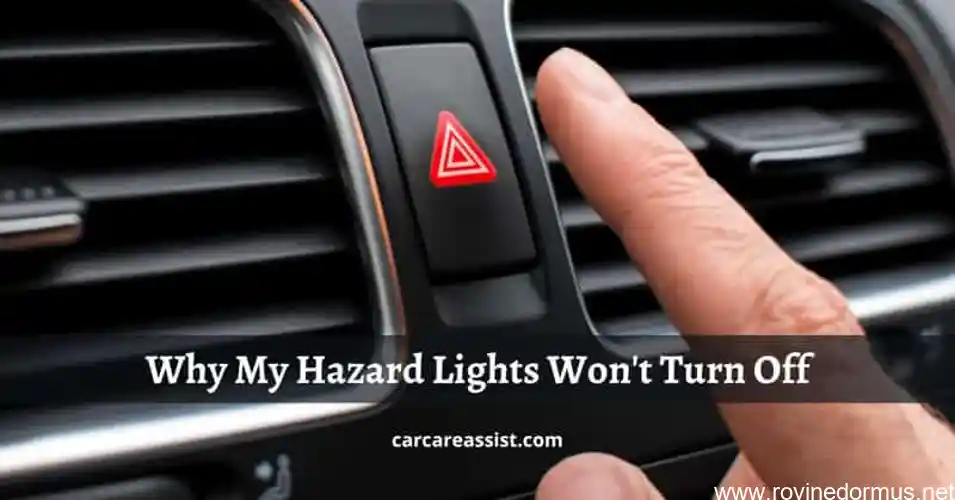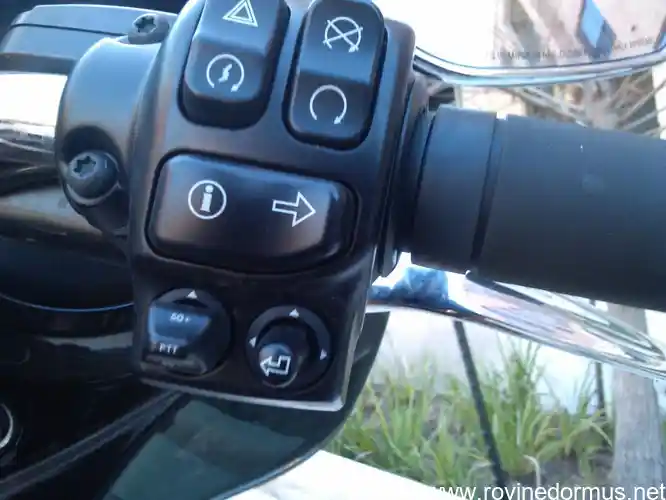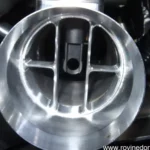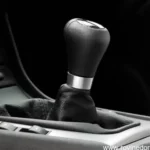When your hazard lights refuse to turn off, it can be a puzzling and potentially dangerous situation. Understanding the underlying causes of this malfunction is crucial for effectively resolving the issue. This comprehensive guide delves into the potential reasons why your hazard lights may be stuck on, covering electrical issues, mechanical failures, and other possible factors. By exploring these causes and providing troubleshooting tips, we aim to empower you with the knowledge to address this problem safely and efficiently, restoring functionality to your vehicle’s hazard lighting system.
Hazard Lights Won’t Turn Off: Understanding the Causes

If you find yourself in the perplexing situation where your hazard lights refuse to turn off, leaving you feeling like a beacon of confusion on the road, know that you’re not alone. This common automotive conundrum can be caused by a myriad of factors, both electrical and mechanical. Embark on a journey with me as we unravel the potential culprits behind this frustrating issue and equip you with the knowledge to restore your hazard lights to their intended functionality.
Troubleshooting Electrical Issues Behind Hazard Lights Malfunction

If your hazard lights have decided to throw a tantrum and refuse to turn off, it’s time to investigate the electrical system that governs them. Electrical gremlins can cause all sorts of havoc, making it crucial to troubleshoot the issue promptly. Start by checking the fuses and relays responsible for the hazard lights. These components act like safety valves, protecting the system from overloads.
If one blows, it could be the culprit behind your hazard light woes. Next, inspect the wiring and connectors involved in the hazard light circuit. Loose connections or damaged wires can disrupt the flow of electricity, leading to malfunctions. Don’t forget to check the hazard light switch itself; it might be worn out or malfunctioning, preventing the lights from turning off.
.
Checking Fuses and Relays
If your hazard lights refuse to turn off, leaving you in a frustrating predicament, it’s time to troubleshoot the electrical issues that may be lurking beneath the surface. Begin by inspecting fuses and relays, those unsung heroes of your vehicle’s electrical system. A blown fuse can interrupt the flow of electricity to the hazard lights, preventing them from deactivating. Similarly, faulty relays can disrupt the switching mechanism, leaving your hazard lights stuck in an endless loop of flashing.
Once you’ve checked these components, it’s time to embark on a thorough examination of the wiring and connectors. Damaged wires or loose connections can create electrical gremlins, disrupting the proper functioning of your hazard lights. By meticulously tracing the electrical pathways and ensuring secure connections, you can identify and resolve these elusive electrical issues and restore your hazard lights to their intended state of operation.
Inspecting Wiring and Connectors
If your hazard lights stubbornly refuse to turn off, it’s time to delve into the electrical realm behind the scenes. Begin by scrutinizing the fuses and relays, acting as the gatekeepers of electrical power. A blown fuse or faulty relay can disrupt the proper flow of electricity, leaving your hazard lights illuminated indefinitely. Next, embark on an inspection of the wiring and connectors.
Loose connections or damaged wires can introduce resistance or short circuits, hindering the smooth transmission of electrical signals. By addressing these potential electrical glitches, you’ll illuminate the path towards resolving your persistent hazard light conundrum.
Addressing Mechanical Failures Related to Hazard Light Switch

“My hazard lights won’t turn off!” If this exclamation has escaped your lips, you’re not alone. Persistent hazard lights can be a perplexing and potentially hazardous issue. When this occurs, it’s essential to delve into the underlying causes to restore functionality and ensure safety. One potential culprit lies within mechanical failures related to the hazard light switch.
This crucial component acts as the gatekeeper, controlling the activation and deactivation of your hazard lights. Understanding the mechanics behind the switch and identifying any malfunctions will guide you towards effective troubleshooting and a prompt resolution.
Identifying Switch Malfunctions
When it comes to addressing mechanical failures with your hazard light switch, there are a few key steps you’ll want to take. First, identify any potential switch malfunctions that could be causing the continuous illumination of your hazard lights. This could involve physically examining the switch for any visible damage or loose connections. Additionally, you should check the switch’s functionality by manipulating it and observing whether the hazard lights respond appropriately.
If you suspect a faulty switch, consider replacing or repairing it to restore proper function.
Replacing or Repairing the Hazard Light Switch
Addressing mechanical failures related to the hazard light switch requires a closer examination. If your hazard lights remain stubbornly lit, the culprit might lie within the switch itself. A faulty switch can disrupt the electrical circuit, preventing the lights from deactivating. Certain indicators, such as a flickering hazard light indicator or a switch that feels loose or unresponsive when pressed, can hint at switch malfunctions.
In such cases, replacing or repairing the hazard light switch might be necessary to restore proper functionality.
Exploring Other Possible Factors Triggering Hazard Light Issue

Have you found yourself at a standstill, your hazard lights obstinately refusing to switch off, leaving you baffled and stranded? This perplexing predicament can stem from various underlying issues that require careful investigation. Beyond electrical glitches or mechanical switch malfunctions, it’s crucial to explore other potential culprits that may be interfering with your hazard light system. Delving into these hidden factors can help you pinpoint the root cause and restore normalcy to your vehicle’s lighting functions.
Ensuring Safety While Resolving Hazard Light Malfunction
When tackling the issue of hazard lights refusing to turn off, safety should be your paramount concern. Just as hazard lights serve to alert others to potential hazards on the road, addressing the malfunction requires a proactive approach to minimize risks. Visualize yourself as a seasoned detective, carefully examining the clues to uncover the root of the problem. Approach the task with the understanding that even a minor oversight can have serious consequences.
Remember, your safety, as well as that of others, depends on resolving this issue promptly and effectively. Treat the situation with the utmost caution, and never hesitate to seek professional assistance if the problem persists or if you encounter any difficulties along the way.
**Q1. Why won’t my hazard lights turn off?**
**Ans: The hazard switch may be faulty or there could be a short in the wiring.**
**Q2. How do I turn off my hazard lights if the switch is broken?**
**Ans: You can pull the hazard fuse or disconnect the battery.**
**Q3. What is the most common cause of hazard lights staying on?**
**Ans: A faulty hazard switch or a short in the wiring.**
**Q4. Can I drive with my hazard lights on?**
**Ans: It is not recommended to drive with your hazard lights on unless you are in an emergency situation.**
**Q5. How much does it cost to fix hazard lights?**
**Ans: The cost to fix hazard lights can vary depending on the severity of the issue, but typically ranges from $50 to $200.**
**Q6. Can I fix hazard lights myself?**
**Ans: Yes, you can fix hazard lights yourself if you have some basic electrical knowledge. However, it is recommended to consult with a mechanic if you are not comfortable with electrical work.**

I am Senior Project Manager at rovinedormus.net.






Leave a Reply